In today's world, where visual communication plays a fundamental role, the terms graphic design and multimedia design appear frequently and are often confused with each other. Although they share some basic principles, each of these fields has its own approach, tools, and applications. Knowing the key differences between the two can help you choose the best option for your projects creativos⬇️.
Introduction.
Graphic design and multimedia design are essential disciplines within the field of visual communication, but they approach content creation in different ways. While graphic design focuses on the creation of static images, multimedia design extends to interactive and audiovisual media.
Definition of graphic design.
Graphic design is a creative discipline that combines typography, images and color to communicate messages visually. It is a powerful tool for building brand identities, designing advertising materials, and creating editorial content in both print and digital formats.
Graphic design is commonly used in the creation of logos, business cards, posters, brochures, and in the layout of magazines and books. The most popular tools among graphic designers include Adobe Photoshop and Illustrator, which allow you to manipulate images and create vector illustrations with great precision.
Definition of multimedia design.
Multimedia design, on the other hand, encompasses a variety of media that combine text, images, video, sound, and animation to create interactive and dynamic experiences. This discipline is fundamental in the creation of content for digital platforms, including websites, applications, video games, and interactive presentations.
Multimedia designers often work with tools such as Adobe After Effects for creating motion graphics, Blender for 3D modeling, and platforms such as Unity for developing interactive experiences. This field requires a diverse set of skills, from video editing to basic programming, depending on the nature of the project.
Differences between graphic design and multimedia design.
Here are the main differences between graphic design and multimedia design, organized in a clear and dynamic way:
- Focus and objectives:
- Graphic design: focuses on the creation of static images, where the main objective is to communicate a message clearly and effectively through visual elements such as text and graphics.
- Multimedia design: involves the creation of dynamic and interactive content, where the goal is to engage the user through multi-sensory experiences that combine different media.
- Media and formats:
- Graphic design: traditionally associated with print media, although today it is also applied in digital media such as web banners and graphics for social networks.
- Multimedia design: strongly linked to digital and interactive media, including videos, animations, mobile applications, and interactive web experiences.
- Required skills:
- Graphic design: requires proficiency in typography, color theory, and visual composition. Technical skills in design software are essential.
- Multimedia design: in addition to graphic skills, requires knowledge in video editing, animation, sound, and sometimes basic programming to create interactive experiences.
- Target audience and usability:
- Graphic design: is usually oriented to an audience that consumes content passively, such as readers of a magazine or viewers of an advertisement.
- Multimedia design: is designed for users who actively interact with the content, such as in a video game or an educational application.
Examples of graphic design projects:
- Corporate identity: logos, business cards and brand manuals are essential for the visual representation of a company.
- Editorial design: the design of magazines, newspapers and books requires careful organization of text and images to guide the reader through the content.
- Advertising and marketing: posters, banners and brochures are key visual tools in the promotion of products and services.
Examples of multimedia design projects:
- Animation and video: the creation of animated content for advertisements/propaganda, explainer videos, and 3D animations is included in this field.
- Interactive web design: focuses on creating websites that are not only visually appealing, but also interactive, with elements such as dynamic forms and visual effects.
- Multimedia presentations: these are mostly used in education and business, combining text, images, and video to convey information effectively.
Intersection between graphic design and multimedia design.
Although they are different disciplines, both fields often intersect. For example, a logo (graphic design) can be animated (multimedia design) for use in a corporate video introduction. This integration allows designers to explore new creative possibilities and enhance the way audiences experience content.
Key tools for graphic design:
- Adobe Photoshop: for image manipulation and graphics creation.
- Adobe Illustrator: ideal for creating vector illustrations.
- CorelDRAW: another popular choice for illustration and graphic design.
Key tools for multimedia design:
- Adobe After Effects: for creating motion graphics and visual effects.
- Blender: open source software for 3D modeling and animation.
- Unity: a powerful platform for developing interactive experiences and video games.
Let's recap a bit: both graphic design and multimedia design are fundamental fields of visual design, each with its own strengths and applications. While graphic design focuses on creating static images with a clear visual impact, multimedia design extends this focus to dynamic and interactive media, offering more immersive experiences. With the rise of digital technologies, both fields continue to evolve, providing creatives and businesses with powerful tools to communicate their messages effectively.
What did you think of this article? If you enjoyed it, follow us on our social networks so you don't miss the latest news.
